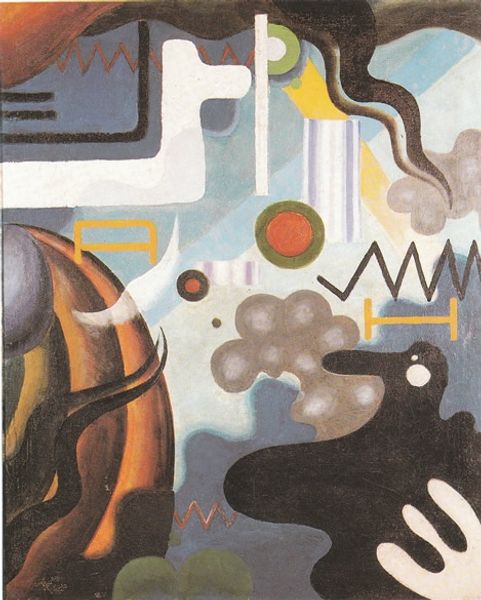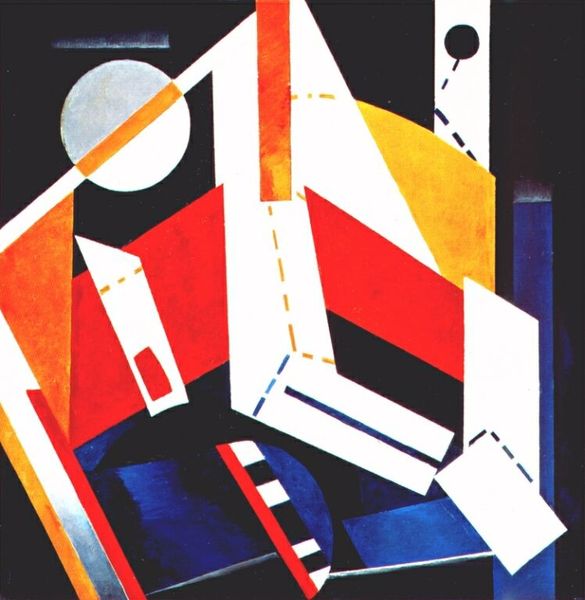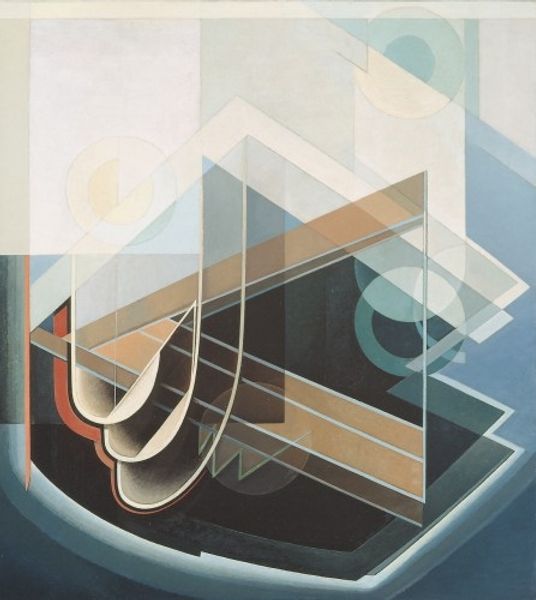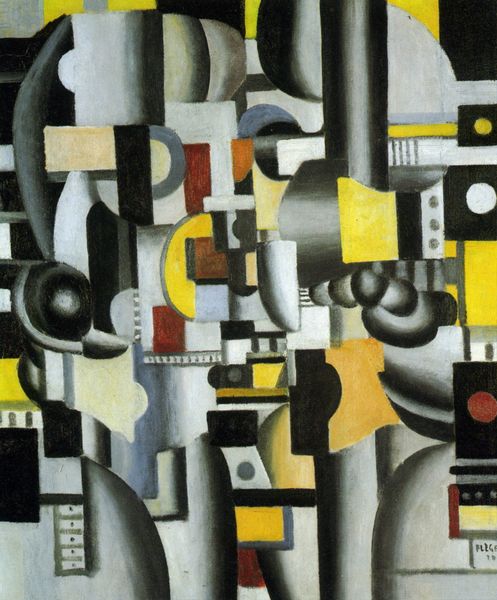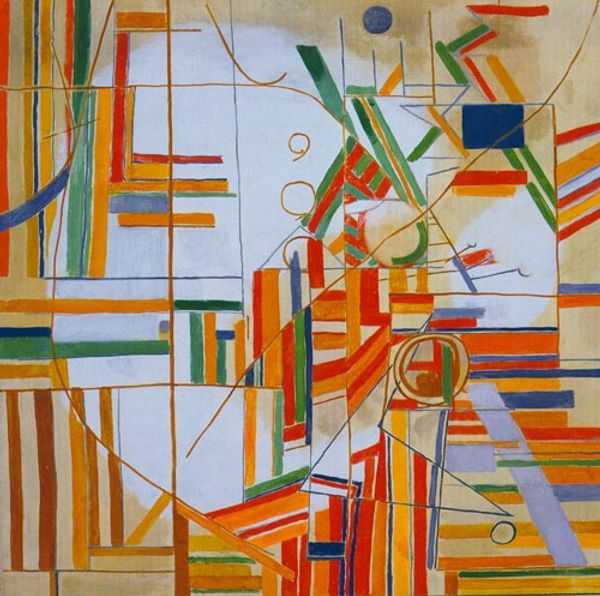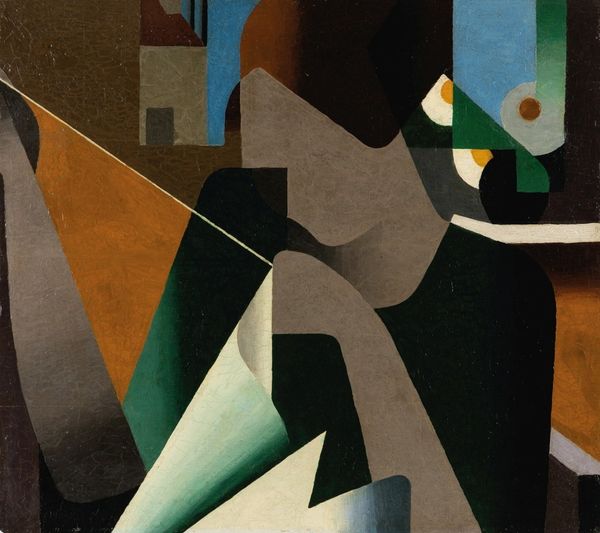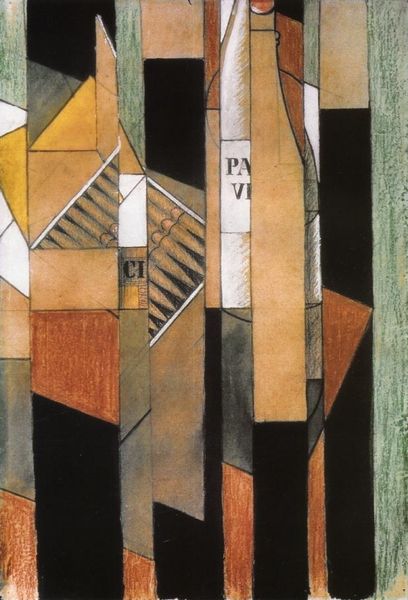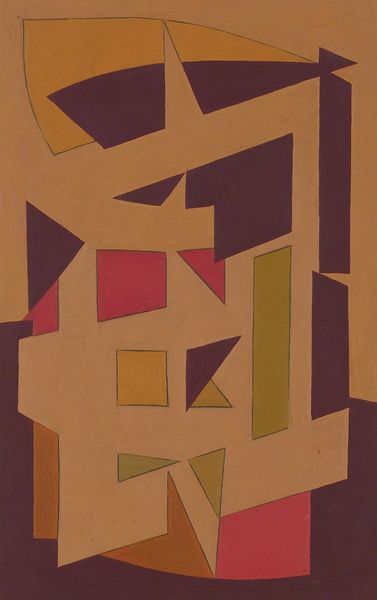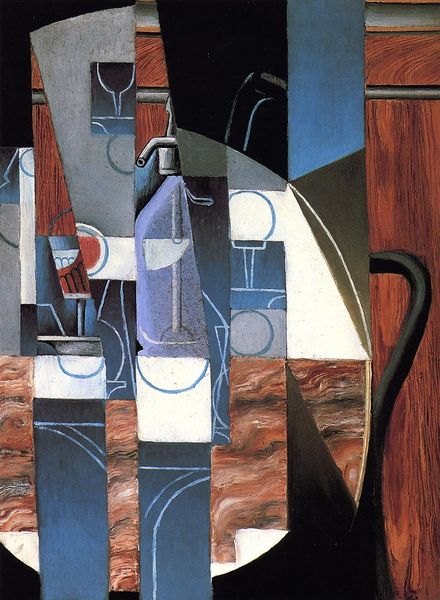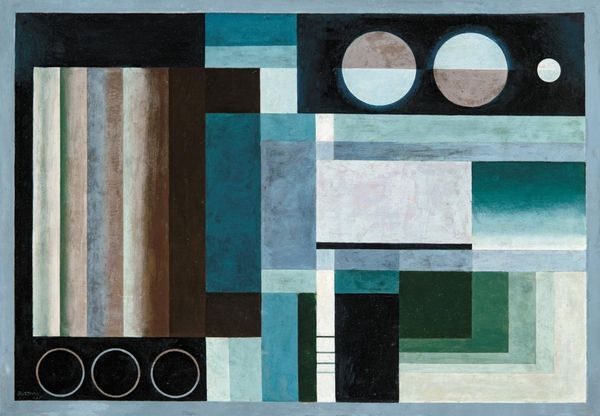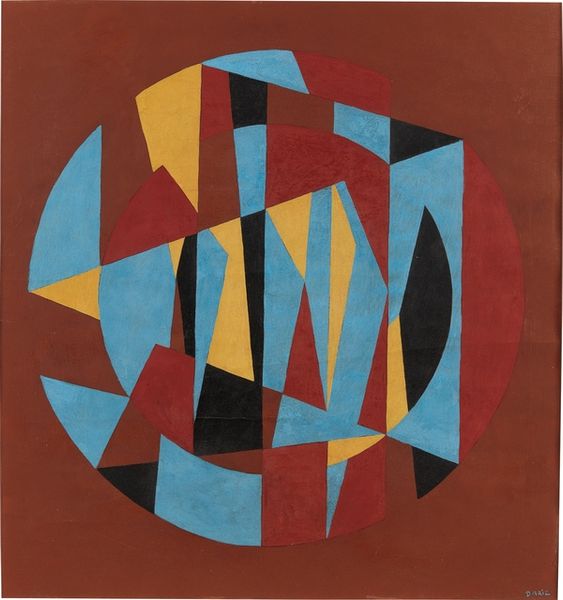
Copyright: Public domain US
Curator: So, here we have Julius Evola's "La libra s'infiamma e le piramidi," created in 1921. It's an oil painting, and, well, it’s… intense, wouldn't you say? Editor: It does have a certain weight. Immediately, I’m struck by how industrial the shapes seem—cylindrical forms suggesting pipes or perhaps structural supports. All those cool blues and browns layered. It reminds me of early factory architecture, you know? Functional, robust... Curator: That's interesting because Evola was heavily into esotericism and traditionalism. Those geometric forms, to me, hint at hidden meanings, perhaps even alchemy. Look at the symbol at the top; the spheres aligned vertically... It almost feels like he’s trying to map some unseen reality, a cosmic order onto canvas. Editor: I see it as mapping a very tangible reality—the rise of industry and technology after the war. Considering it's oil paint, look at the viscosity in those layers, which creates a rough hewn texture that matches that reality: How oil became essential for fueling everything. Is it a coincidence the colors echo oil sheens too? Curator: That’s a compelling link. Maybe it’s both! I think Evola might have seen the machine age as either a path to transcendence, an alignment of human and cosmic forces, or conversely, as a brutal force disrupting some ancient harmony. His titles often have such dramatic, fiery implications. It is the flaming libra after all. Editor: "Flaming Libra"…even that evokes balance being overthrown in the new order, a time when weighing and distributing goods and material was disrupted by new technologies. But whether transcendence or collapse, consider the materials used to convey these things! How the very paint embodies that anxiety about a material transformation of life! Curator: True, there’s a definite tension between order and chaos, precision and looseness, very present in that central square, which does echo the forms found in early Surrealism. Perhaps Evola, despite his esoteric bent, couldn’t escape the anxieties of his time. He presents to us, a question—one of transformation versus destruction. Editor: And one deeply entangled with material conditions, that the "Flaming Libra" had so much power, with that much ability to weigh on Evola's unconscious, reflects a broader social anxiety, as society rapidly transformed into modernity in a time of industrial and technological revolution. Curator: Yes, a potent collision of ideas, beautifully… or perhaps unsettlingly… captured in paint. It speaks volumes about the anxieties of progress and hidden systems. Editor: Right, a collision made literal in pigment and linseed, which is kind of the point. I am forever here for materiality and consumption as a central through line in an artwork analysis.
Comments
No comments
Be the first to comment and join the conversation on the ultimate creative platform.
